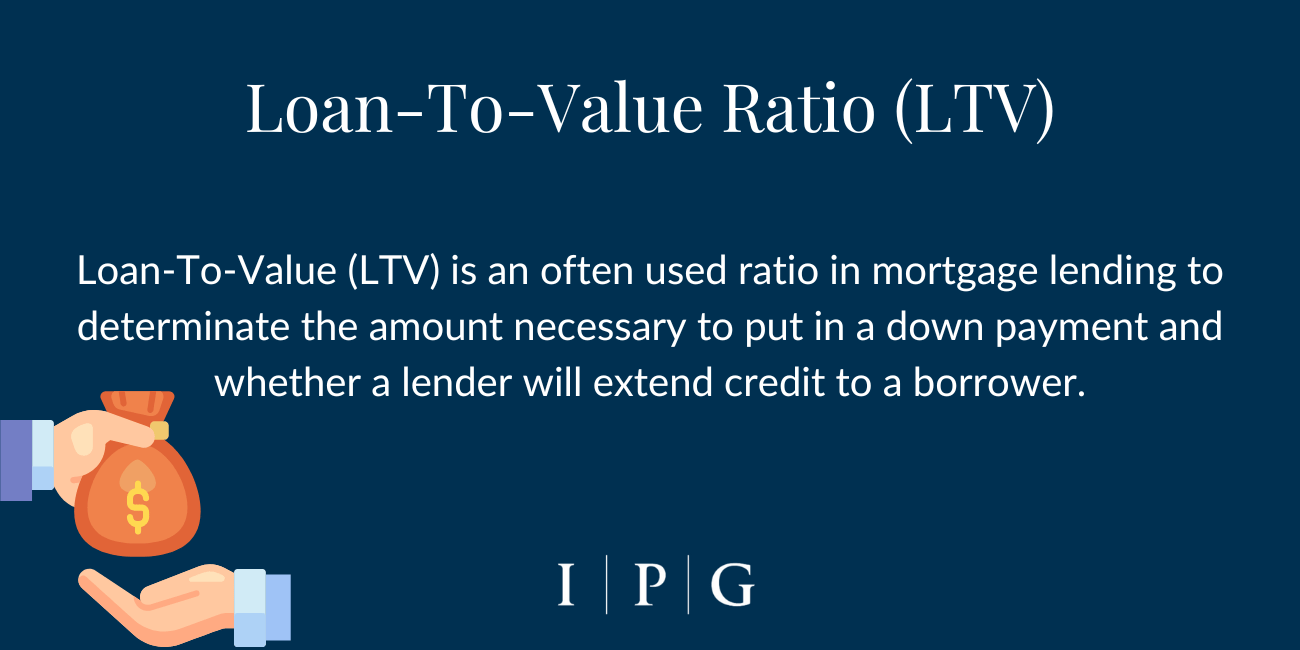Loan to Value Ratio: Definition, Calculation and Examples

If you’re buying, refinancing, or pulling cash out, your deal lives and dies by LTV.
The loan-to-value ratio tells lenders how much of the property’s value you’re financing — and it drives approval, rate, leverage, and structure.
Below, we break down what LTV means, how to calculate loan-to-value in seconds, a clean example you can copy, LTV vs. CLTV, and practical tips to strengthen your position.
What Is Loan To Value (LTV) Ratio?
The loan-to-value ratio expresses how much of a property’s value is financed through debt versus how much is paid upfront as equity.
It’s typically presented as a percentage and used by lenders to evaluate the risk of a mortgage, refinancing, or commercial loan.
- Low LTV (≤70%) → Low risk, stronger equity, better loan terms
- Moderate LTV (70–80%) → Acceptable risk, standard terms
- High LTV (80%+) → Higher risk, may require additional insurance or collateral
In commercial real estate, lenders generally prefer LTV ratios between 65% and 80%, depending on the asset class and borrower profile.
How to Calculate the LTV Ratio
The loan-to-value ratio formula is simple and standardized across the industry:
LTV = (Loan Amount ÷ Appraised Property Value) × 100
Example:
If a property is appraised at $2,000,000 and you borrow $1,500,000,
LTV = (1,500,000 ÷ 2,000,000) × 100 = 75%
That means the lender finances 75% of the property, and you provide 25% equity.
This 75% threshold is common in both commercial and residential lending — it often represents the point at which borrowers avoid extra insurance or higher rates.
Why LTV Matters in Real Estate
Lenders rely on LTV to:
- Determine loan eligibility and interest rates
- Set loan terms and down payment requirements
- Assess whether private mortgage insurance (PMI) is needed
Borrowers benefit from understanding their LTV because it directly impacts:
- The cost of borrowing
- Refinancing opportunities
- Leverage and equity growth over time
Pro Tip:
To improve your LTV ratio, consider making a higher down payment or negotiating a lower purchase price.
LTV vs. CLTV: What’s the Difference?
While LTV measures a single loan against a property’s value, CLTV (Combined Loan-to-Value) includes all secured loans — such as a primary mortgage plus any secondary loans or lines of credit.
Example:
If a property worth $1,000,000 has:
- A $700,000 first mortgage
- A $100,000 second loan
Then CLTV = ($700,000 + $100,000) ÷ $1,000,000 = 80%.
Lenders consider CLTV when multiple debts exist on a property, as it better reflects total exposure and repayment risk.
How LTV Affects Borrowers
A borrower’s LTV ratio can determine:
- Interest Rates: Higher LTVs often mean higher rates.
- Loan Approval: Exceeding lender limits may lead to denial.
- Insurance Requirements: High LTVs may trigger PMI or additional collateral.
- Refinancing Options: Lower LTVs make refinancing easier and cheaper.
Maintaining a low LTV not only improves approval chances but also helps you build equity faster — a key advantage for long-term investors.
What Is a Good LTV Ratio?
There’s no universal “perfect” LTV, but general benchmarks are:
| Loan Type | Ideal LTV Range |
|---|---|
| Commercial Real Estate | 65%–80% |
| Multifamily or Mixed-Use | 70%–80% |
| Residential Mortgage | Up to 97% (Fannie Mae/Freddie Mac limit) |
For refinancing, most lenders prefer an LTV under 80%, while risk-averse commercial lenders may cap at 75%.
Final Thoughts
Understanding your Loan-to-Value ratio is crucial to navigating real estate financing successfully.
It’s not just a number — it’s a snapshot of your leverage, equity, and financial strength in any deal.
By managing your LTV effectively, you can unlock better terms, reduce risk, and increase the long-term profitability of your investments.
If you’re considering refinancing, acquiring new space, or leveraging equity in your portfolio, IPG’s team can help you evaluate your LTV position and structure financing that fits your strategy.




